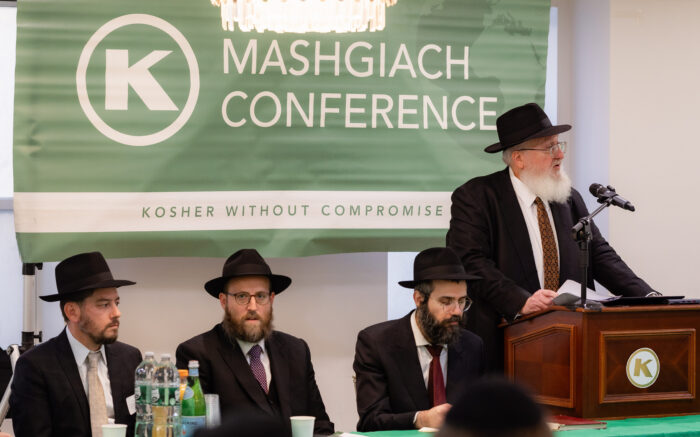Compiled by Dina Fraenkel
On Chanukah, the Previous Lubavitcher Rebbe, Rabbi Yosef Yitzchok Schneersohn, would tell his followers: “We must listen carefully to what the candles are saying.”1 The message of Chanukah permeates our service to G-d throughout the year, as it says in Mishlei, “A mitzvah is a lamp and Torah is light.”2 Of course, this applies to all mitzvos, but even more so to those that are connected to visible light.
The spiritual effects of the Chanukah lights are clearly discerned from the halachos surrounding the mitzvah. The candles should be lit after sunset and burn into the night and they should be placed outside the entrance to one’s home, primarily to illuminate the public domain.3 Both the darkness of night and the public domain represent those which obscure G-dliness and prevent G-d’s Light from permeating all aspects of our existence. Lighting the Chanukah candles elevates the material world to reveal the G-dliness concealed inside.
The lights of Chanukah possess a unique power that is linked to the type of miracle they commemorate. The rule of the Greeks was a time of intense spiritual darkness, but the Macabees were able to persuade even the Hellenized Jews to do teshuva and have mesiras nefesh to fight the Greeks and emerge victorious, rededicating the Beis HaMikdash and transforming darkness into light.
In the Chanukah song HaNeiros Hallalu we learn another halacha regarding the Chanukah lights: “These lights are holy and we are not permitted to make use of them, only to look at them.” To ensure that we don’t derive any personal benefit from the Chanukah lights, we light an extra candle, the shamash, which is placed above all of the other candles.4 Again, this law emphasizes the uniqueness of the mitzvah of the Chanukah lights. This mitzvah is only performed “lishmah” (for the sake of Heaven) with no material reward, teaching us to transcend ourselves and our self-interest to serve G-d for His sake alone and since the lights are kindled when it is dark outside, it shows that we can even attain this level in times when G-dliness is concealed.
Finally, it is a universal Jewish custom to add a light for each night of Chanukah even though the minimum halachic requirement is to light one light on each night.5 Furthermore, many have the custom to add a light each night for each member of the household, observing the mitzvah mehadrin min hamehadrin (in the highest level possible). Our ability to fulfill the mitzvah of the Chanukah lights to the highest level was given to us by the Macabees who, although they could have technically lit the menorah with impure oil, searched until they found a flask of pure oil, mehadrin min hamehadrin.
From all of the halachos of Chanukah we learn that we must continually increase light in the world and spread that light to the farthest reaches. As we take this lesson with us throughout the year, may each of us be inspired to further our spiritual growth, spread G-dly light in our homes and throughout the world and to transform the darkness of the material world into light, ultimately brining the Ultimate Light of the Final Redemption.
1. Kuntreis Baruch SheAsah Nissim (Kehot, NY, 5711).
2. Mishlei 6:23.
3. Gemara Shabbos 21b; Shulchan Oruch, Orach Chayim 672:1-2.
4. Shulchan Oruch, Orach Chayim 673:1.
5. Shabbos 21b; Rambam, Mishneh Torah, Hilchos Chanukah 4:1; Tur, Shulchan Oruch, Orach Chayim 671:2.


 EN
EN  ZH
ZH  KR
KR  BR
BR  ES
ES  IN
IN  IL
IL 




